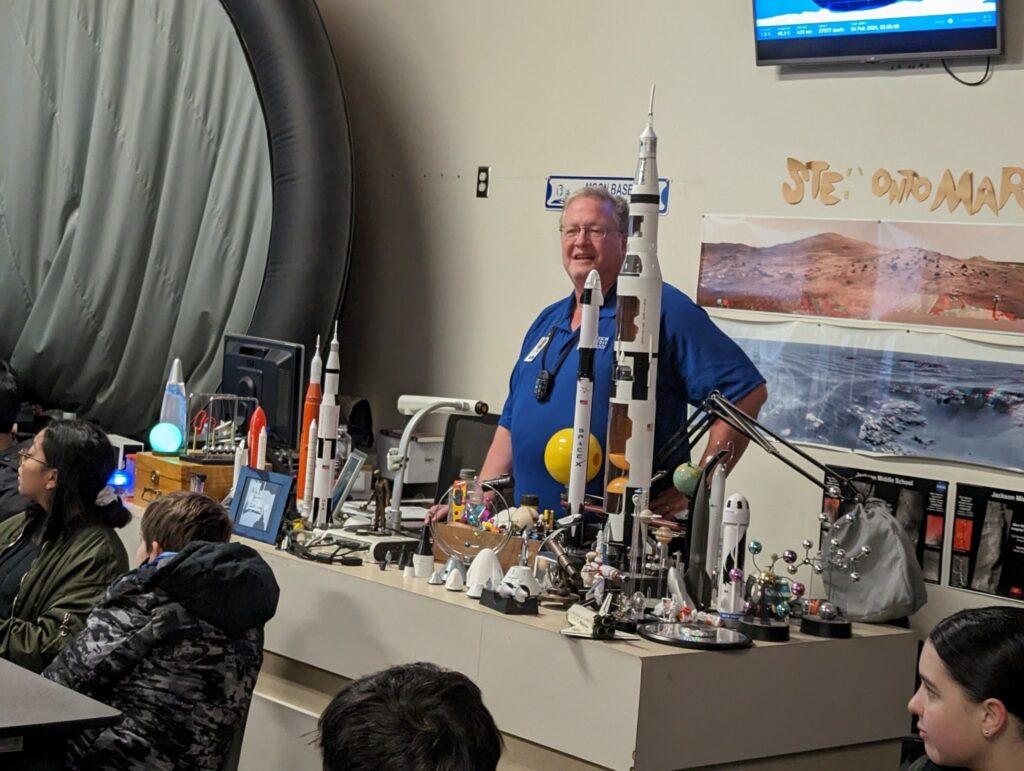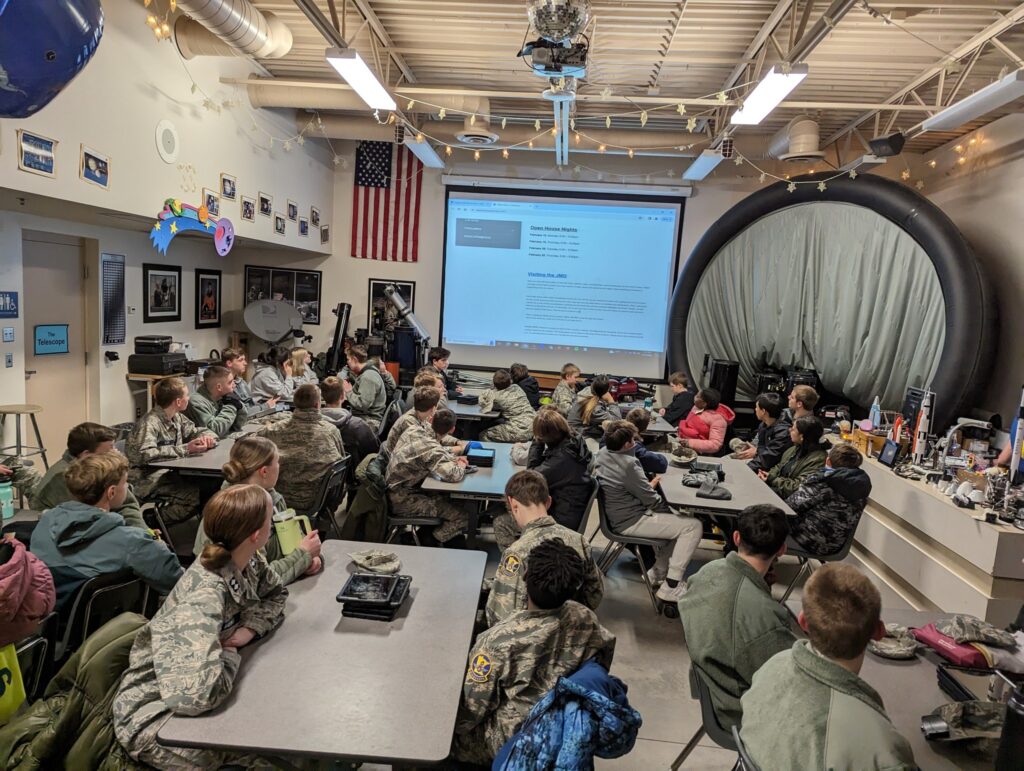Have you ever wanted to take a tour of the night sky? Civil Air Patrol’s Anoka County Composite Squadron got to do just that during their visit to the Jackson Observatory.
The observatory, located in Champlin, offers a variety of opportunities for space exploration. Visitors can take a guided tour of the sky and upcoming stellar events, as well as take home a star map to further their exploration. Guests also get to head up into the dome and use the observatory’s 14-inch telescope to take an up-close view of the Moon and planets. The Jackson Observatory is the only observatory in the state of Minnesota located in a school, and due to its mission of education, has had a long-standing relationship with the Anoka Squadron for 10 years.
The annual trip to the observatory by Anoka Squadron is always an engaging event, which was demonstrated during their most recent visit on February 13 with an attendance of 54 cadets. During their time at the observatory, the cadets got to partake in many activities led by a professional astronomer Ron Schmit. The cadets started their evening with a current events briefing, where they discussed the upcoming solar eclipse and current astronomy
accomplishments. Then, cadets were led on a tour of the night sky where they learned a multitude of facts about constellations and other notable landmarks. They learned how to locate multiple noteworthy stars and planets and how to use basic astronomy tools and resources so they could explore the stars on their own. From there, the cadets were split into groups so they could get a chance to tour the observatory’s impressive telescope dome.
Inside the dome, cadets got a close view of the observatory’s telescope and got to learn how it works. Despite the colder temperature, the sky was clear enough to view two significant objects in the night sky; The Moon and Jupiter. Starting with the Moon, cadets learned about and observed many of The Moon’s largest craters and surface features. Then, cadets got to learn about different lens sizes and magnifications, which came in useful when trying to observe Jupiter. With the new lens, they were able to observe Jupiter and two of its moons; Ganymede and Europa.
While cadets were not in the dome, they were participating in a Kahoot activity led by the squadron’s Aerospace Education officer, LtCol Mary Albright. Participants were asked questions about all things space-related, which helped them study for their aerospace test, which is a requirement for most promotions. One of Civil Air Patrol’s missions is Aerospace Education, which is something this trip encourages in all of Anoka’s cadets. The information they learn in the various activities leads to further exploration of aerospace topics. Cadets also have the opportunity to ask questions to a professional astronomer and learn more about a fascinating topic under the umbrella of aerospace.
Civil Air Patrol is the longtime auxiliary of the U.S. Air Force and as such is a valued member of its Total Force. In its auxiliary role, CAP operates a fleet of 560 single-engine aircraft and 1,944 small Unmanned Aircraft Systems (sUAS). It performs about 90% of continental U.S. inland search and rescue missions as tasked by the Air Force Rescue Coordination Center and is credited by the AFRCC with saving an average of 82 lives annually. CAP’s
60,000 members also perform homeland security, disaster relief and drug interdiction missions at the request of federal, state and local agencies. Operating as a nonprofit organization, CAP also plays a leading role in STEM/aerospace education, and its members serve as mentors to about 25,000 young people participating in CAP’s Cadet Programs. Visit www.CAP.News or www.GoCivilAirPatrol.com for more information.
Point of Contact
Anna Stambaugh – AStambaugh@mncap.org – (763)-339-8037

Jackson Observatory Coordinator and professional astronomer Ron Schmit teaching Anoka’s cadets about constellations and other notable landmarks in the night sky. (Photo Credit: LtCol Mary Albright)

Cadets from the Anoka County Composite Squadron listening to a presentation about the Jackson Observatory’s activities and about the upcoming solar eclipse. (Photo Credit: LtCol Mary Albright)
